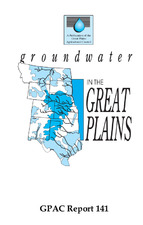| dc.description.abstract | Groundwater lies hidden beneath the soil, out of sight and largely out of mind. As a result, it’s poorly understood by most who depend on it for drinking water and other uses. Misconceptions about groundwater are common. In 1904, a Texas judge ruled that “the existence, origin and movement of (ground) water...is so secret, occult and concealed...(that) any attempt to administer any set of legal rules in respect to it would be involved in hopeless uncertainty.” In spite of increasing scientific knowledge, groundwater is still perceived in much the same way by the public today.
Despite the lack of understanding, groundwater is the most significant water resource for most Americans.
Roughly 75% of U.S. cities depend on groundwater for all or part of their water supplies. More than half of all Americans and 95% of all persons in rural areas rely on groundwater as their primary source of drinking water.
Throughout the United States and the world, vital aquifers supply irrigation and drinking water for many regions More than 97% of the world’s usable freshwater supply – an estimated 9 trillion acre feet – is groundwater.
Despite the seeming abundance of groundwater, there are concerns about how long its supplies will last, especially in areas where water use is high, and whether its quality is being threatened by natural and man-made contaminants. | en |


